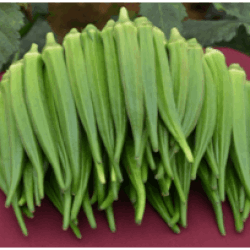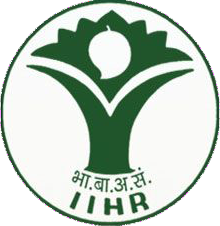
Crop Production
Okra is an important vegetable crop valued for its immature tender and green fruits in India. The fruits are eaten mainly boiled in culinary preparations, as sliced and fried pieces. It is also slice dried in sun for its year-round consumption. Okra fruits are rich in calcium (90mg/100g fresh weight) and provide valuable supplementary items in the tropical diet, which is basically starchy in nature lacking calcium and iron. Moderate climate. Tender, green fruits are cooked in curry in curry and soup. The root and stem are used for clearing cane juice in preparation of ‘gur’. High iodine content fruits helps control goiter while leaves are used in inflammation and dysentery. The fruits also help in cases of renal colic, leucorrhoea and general weakness. The dry seed contains 13-22% good edible oil and 20-24% protein. The oil is used in soap, cosmetic industry and as vanaspati while protein is used for fortified feed preparations. The crushed seed is fed to cattle for more milk production and the fibre is utilized in jute, textile and paper industry.
Soil type : It is grown on sandy to clay soils but due to its well-developed tap root system, relatively light, well –drained, rich soils are ideal. As such, loose, friable well-manured loam soils are desirable. A pH of 6.0-6.8 is ideally suited. All soils need to be pulverized, moistened and enriched with organic matter before sowing.
Climate: Okra requires a long, warm and humid growing period. It can be successfully grown in hot humid areas. It is sensitive to frost and extremely low temperature. For normal growth and development a temperature between 24° C and 28° C is preferred. At 24° C the first flower bud may appear in the third leaf axil while 28° C it may appear in sixth leaf axil. For faster plant growth still higher temperature helps though it delays the fruiting, But at higher temperature beyond 40° – 42° C, flowers may desiccate and drop, causing yield losses. For seed germination optimum soil moisture and a temperature between 25° C and 35° C is needed with fastest germination observed at 35° C. Beyond this range the germination will be delayed.

